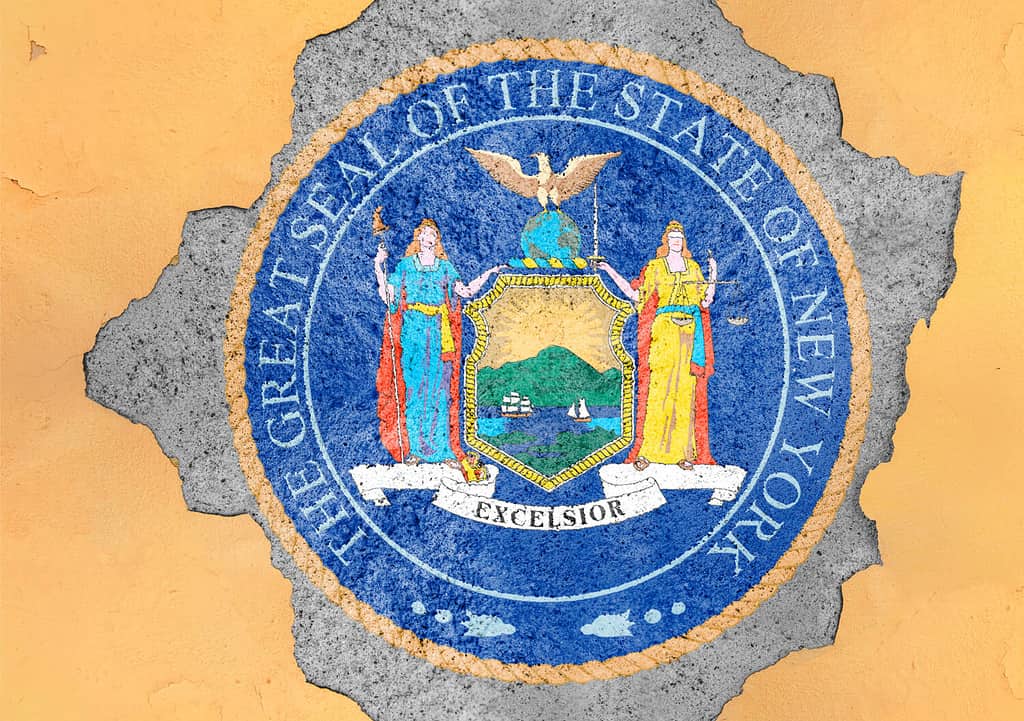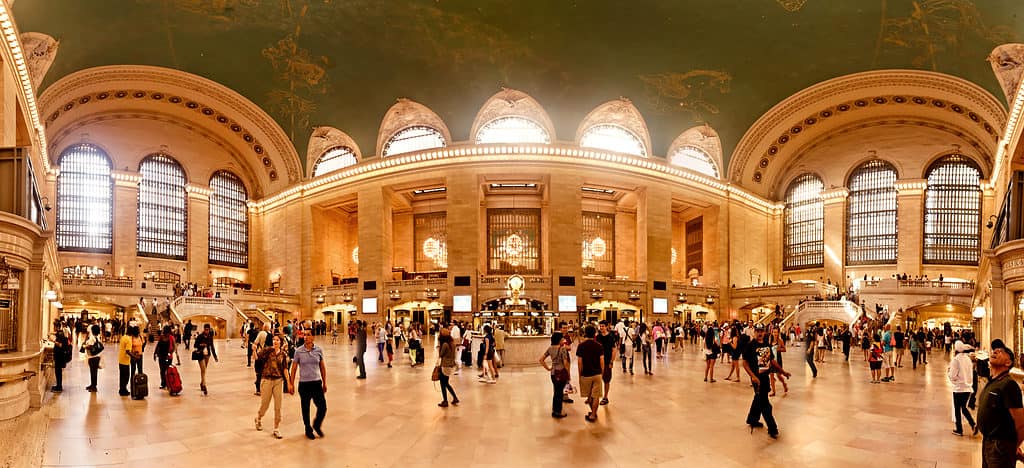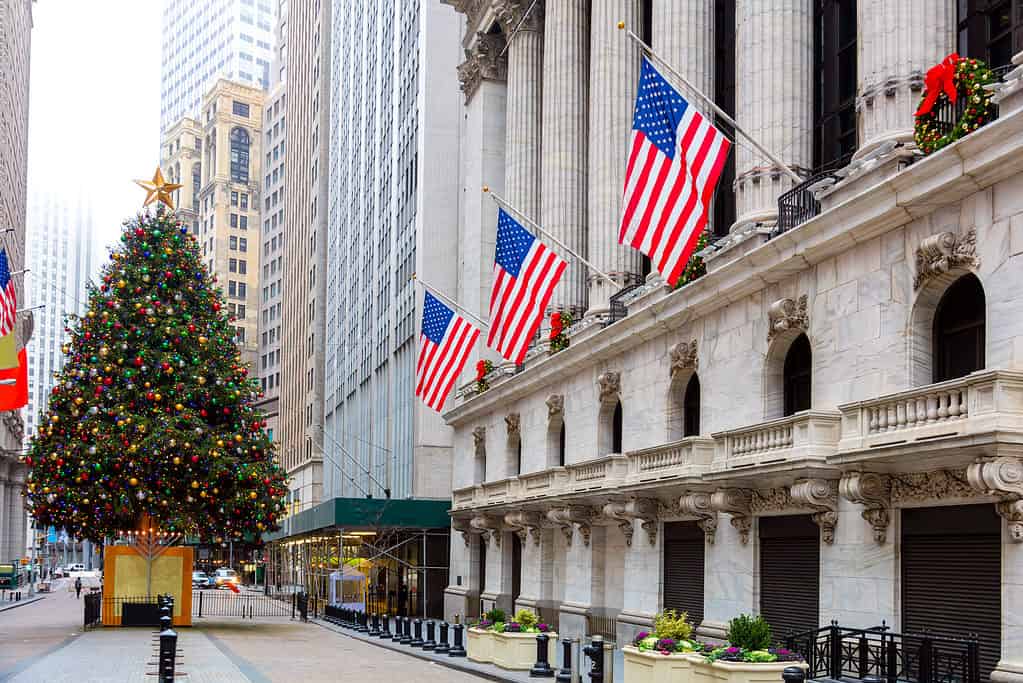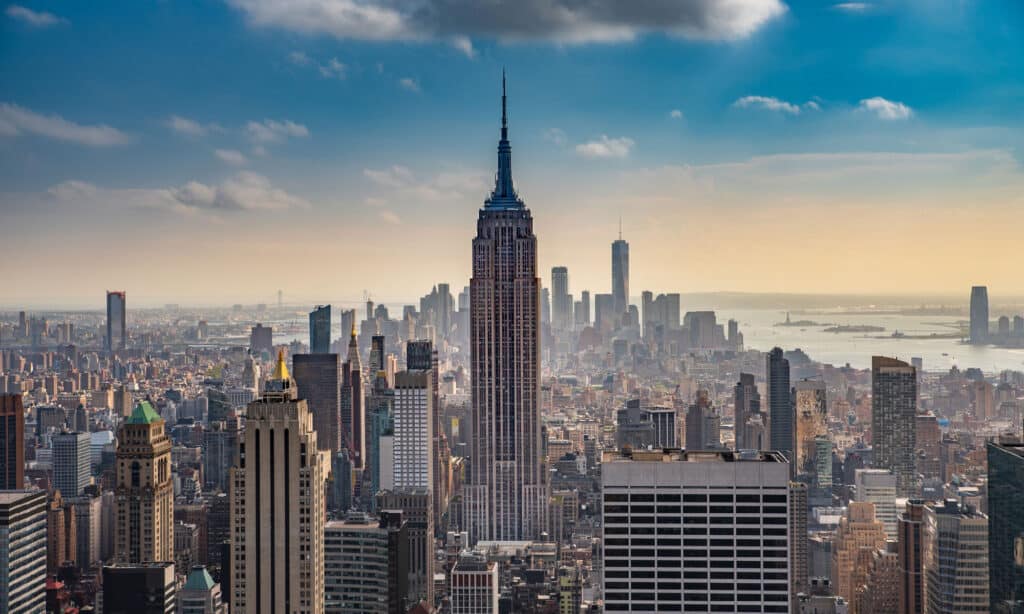New York was given its distinctive “Empire State” moniker in 1784. An acknowledgment of its vast economic clout, evidenced by bustling seaports and vibrant commercial enterprises reminiscent of an empire-in-making.
Some people say the reason for the nickname is New York’s importance in American history. Events like the signing of the Declaration of Independence happened there. This article will explore different factors such as history, economy, and culture that led to the nickname.
Why New York Is Called the Empire State
Historical accounts attribute the first usage of this title to George Washington. In a letter penned in 1785, Washington hailed the unyielding spirit of New York’s inhabitants during the turbulent American Revolution, deeming it the “Seat of Empire.” Yet, despite this glowing endorsement, the precise origins of New York’s imperial moniker remain a mystery. This moniker may also have had historical, economic, or cultural effects in creating it.
1. Historical Factors: The Birth of New York City
New York City’s birth is fascinating and puzzling, from its humble roots as a Dutch colony until other colonial powers entered and vied for control. It saw incredible changes, turning points, twists, and turns throughout its journey.
Dutch Influence on New York
Dutch West India Company first founded the city as New Netherland in 1650. One of their hallmarks was their triangular trade system. Ships would travel all around West Africa, exchanging goods for gold, ivory, and even slaves.
Dutch colonists quickly established trading posts and settlements across the state. We can see their influence today by looking at street names with Dutch-sounding names, such as Harlem, Flushing, and Brooklyn. Furthermore, Manhattan still uses grid systems pioneered by the Dutch!
The British Conquest of New Netherland
In 1664, the British captured New Amsterdam. The English renamed it New York after the Duke of York, the brother of King Charles II. This gave England control over a vast territory from Maine to Delaware and marked the end of Dutch influence in North America. However, the Dutch briefly regained New York in 1673-1674 during the Third Anglo-Dutch War.
Despite leadership changes, New York was still an essential trading hub and home for immigrants from around the globe. Its location at the Hudson River’s mouth made it essential as an entryway between the Atlantic Ocean and the North American interior.
New York and its Role in the American Revolution
New York was one of the original 13 colonies that fought for independence from Britain during the American Revolution. It hosted approximately one-third of all battles fought during the revolution.
The Sons of Liberty and the Stamp Act
One of the earliest expressions of resistance against British taxation and oppression in New York was the Sons of Liberty. This secret organization used violence and intimidation to protest against the Stamp Act of 1765. The act required colonists to pay tax on every paper product, such as newspapers, licenses, playing cards, etc.
In October 1765, New York hosted the Stamp Act Congress – the inaugural intercolonial gathering of elected representatives to protest British taxation. Delegates from nine colonies met at Federal Hall in New York City. They created the Declaration of Rights and Grievances, which asserted their right to taxation only with consent and resistance against British authority. It marked an important step toward colonial unity and resistance.

The Great Seal of the State of New York features a shield supported by two female figures, Liberty and Justice. The crest is an eagle with its wings displayed and looking to the right. Inscribed around the seal is “Excelsior,” Latin for “ever upward.”
©Bennian/Shutterstock.com
Long Island Revolution
In August 1776, a major battle of the American Revolution was fought on Long Island — a battle that had a vast and lasting impact. General William Howe led British forces with a mighty 32,000 troops.
They inflicted heavy casualties upon George Washington’s Continental Army – forcing its retreat. Long Island proved a decisive defeat for Americans, who lost control over New York for most of its duration of hostilities.
The British occupation of New York was harsh and oppressive for residents. Furthermore, New York became an excellent base to launch raids against other areas in the colonies, such as Philadelphia, New Jersey, Connecticut, and Rhode Island.
The Battle of Saratoga and the French Alliance
British General John Burgoyne led a formidable invasion army from Canada, hoping to capture Albany. Burgoyne engaged the Americans in two intense battles, separated by 18 days on the same hallowed ground. In the first encounter, he emerged victorious, but fate would soon deal a different hand.
As the second battle ensued, Burgoyne’s forces suffered a crushing defeat at the hands of the American troops, forcing him to surrender his entire army in October 1777. The resounding triumph at Saratoga rallied the support of France, who stepped forward to offer crucial military and financial aid to the United States.

Grand Central Station is one of the most recognizable landmarks in the world and serves as a major hub for commuters traveling throughout New York City.
©Andrey Bayda/Shutterstock.com
End of War
On a fateful September day in 1783, the world witnessed an amazing event as the guns fell silent – the birth of a new nation. Thanks to the tenacity of John Jay, John Adams, and Benjamin Franklin, America was successfully able to negotiate peace with representatives of King George efficiently. It was indeed a sight to see. The momentous accord recognized the hard-won independence of the United States and established clear boundaries between the fledgling nation and British North America.
After the American Revolutionary War had concluded, New York emerged as one of the most populous and influential states in its new nation. It played an instrumental role in crafting and ratifying the Constitution. It became a hub of commerce, culture, innovation, and diversity. Kingston served as its initial state capital before being relocated to Albany in 1797.
New York as the Initial Capital of the U.S
After the Revolutionary War, New York City briefly served as the U.S. capital. But New York would soon lose this privilege due to many disagreements regarding where to establish permanent government centers.
Eventually, congress reached a compromise when they passed the Residence Act in 1790. They authorized the creation of a federal district along the Potomac River between Maryland and Virginia that would become Washington D.C. This district would serve as the permanent capital from 1800 forward. George Washington also made history when he assumed office in New York City on April 30, 1789.
2. Economic Factors: New York As a Center of Commerce, Trade, and Industry
New York was first referred to as the Empire State because of its growth into a major center for commerce, change, and enterprise in the nineteenth and twentieth centuries. Its prime, strategic location on the mouth of the Hudson River’s delta gave it a bonus over other coastal cities when it came to accessing natural herbal sources, markets, and transportation links.
New York’s economy initially thrived on agriculture, fur trading, and shipping. But it quickly advanced into manufacturing, banking, coverage, publishing, and other sectors such as textiles, clothing, iron steel, and electronics. New York became an incubator of innovation & invention with incredible examples like the Erie Canal (1825), Brooklyn Bridge (1883), the Statue of Liberty (1886), the subway machine (1904) & the skyscraper (1909).
New York City as the Largest City in the World
Boasting a population of over 8 million from various ethnic backgrounds, the five boroughs that make up New York City – Manhattan, Brooklyn, Queens, The Bronx, and Staten Island – have each developed distinct identities and cultures. This vibrant mix makes New York City one of the world’s most influential cities, nicknamed the Empire State.
New York City is renowned for being a leader in culture, finance, media, and entertainment. These industries are highlighted by iconic landmarks such as Wall Street (the financial hub), Broadway (the entertainment capital), Times Square (the crossroads of world culture), Central Park (an urban oasis), Metropolitan Museum of Art (the world’s largest art museum), UN Headquarters (a center for international diplomacy) and the Empire State Building (an iconic skyscraper).
New York City is also a global leader in education, research, technology, fashion, tourism, sports, and cuisine. Millions of visitors experience its vibrant offerings yearly. Moreover, over 800 languages are spoken among its residents!

Wall Street is a famous street in lower Manhattan, New York City. It is known for its many financial institutions and stock exchanges, making it one of the most important places in the world when considering global economics.
©Taiga/Shutterstock.com
New York State as A Diverse And Prosperous Economy
New York State is home to approximately 20 million residents and covers an area of 54 thousand square miles. It consists of 62 counties and ten regions:
- Capital Region
- Central New York Region
- Finger Lakes Region
- Long Island Regions
- Mid-Hudson
- Mohawk Valley
- New York City
- North Country
- Southern Tier
- Western New York
The state boasts various natural resources and landscapes that support various economic activities, such as:
- Agriculture (dairy products, apples, grapes, and maple syrup)
- Manufacturing (aerospace, nanotechnology, and biotechnology)
- Tourism (Niagara Falls, Adirondack Park, Catskill Mountains)
- Education (Cornell University, Columbia University, New York University)
Furthermore, New York State also boasts some of its progressive policies and programs related to health care, environmental protection, social justice, and human rights compared with any other state.
3. Cultural Factors: A Melting Pot of Cultures, Languages, and Religions
New York has long been known as a melting pot of cultures since its colonial days when the Dutch first settled here. They welcomed immigrants from various European nations as they settled. When British control took hold, even more settlers arrived from England, Scotland, Ireland, and Germany. They also brought more enslaved Africans.
It became an immigration hotspot at some point in the nineteenth and twentieth centuries, primarily through Ellis Island, which opened in 1892 and processed over 12 million individuals till 1954. Massive groups of migrants arrived from Ireland, Italy, Germany, Poland, Russia, China, and Eastern Europe.
At first, they settled into different neighborhoods of New York City and other parts of the state. They brought languages, cuisines, customs, and religions from their home countries. As a result, New York became known for its ethnic diversity.
New York as a Leader in Arts, Literature, Music, Fashion, and Media
New York has been a center of creativity and innovation since the 18th Century. It produced many famous artists, writers, musicians, designers, and celebrities. Some of the notable figures who were born or lived in New York include:
- Alexander Hamilton
- Washington Irving
- Edgar Allan Poe
- Walt Whitman
- Mark Twain
- Edith Wharton
- Jackson Pollock
- Georgia O’Keeffe
- Frank Sinatra
- Madonna
- Jay-Z
- Beyoncé

From iconic landmarks to diverse neighborhoods and endless entertainment opportunities, New York City has something for everyone. Get ready to explore the dynamic culture and energy of the Big Apple!
©iStock.com/AndreaAstes
The region is renowned for hosting some of the world’s premier institutions and cultural venues, such as:
- The Metropolitan Museum of Art
- The Museum of Modern Art
- The Guggenheim Museum
- The Whitney Museum of American Art
- The Brooklyn Museum
- The Frick Collection
- The Morgan Library & Museum
- Broadway theaters
- Radio City Music Hall
- Lincoln Center for the Performing Arts,
- The Apollo Theater
The state is also a global capital of fashion and media. It hosts the annual New York Fashion Week, showcasing top designers and brands’ latest trends and designs. It is also home to some of the world’s most influential magazines and newspapers, such as:
- New York Times
- The Wall Street Journal
- The New Yorker
- Vogue
- Harper’s Bazaar
- Newsweek
- Forbes
New York as a Source of Inspiration and Innovation for Social Movements
New York City has a long and rich history of social activism, dating back to the 17th century when the city was a Dutch colony. Since then, New Yorkers have fought for various causes, such as civil rights, labor rights, LGBTQ+ rights, environmental justice, and more.
One of the most conspicuous and consequential forms of activism in New York takes the shape of protest. Such an act is a means of articulating opposition, requesting reform, and mobilizing public opinion. New Yorkers have employed various protest methods, including marches, sit-ins, boycotts, and civil disobedience, to subvert the existing order and bring awareness to their plights. Some examples of historic protests in New York include:
The 1911 Triangle Shirtwaist Factory Fire
The 1911 Triangle Shirtwaist Factory fire killed 146 workers, mostly young immigrant women. The event sparked a wave of labor activism and reforms for better working conditions and safety standards.
The 1964 Harlem Riot
In 1964, a riot occurred in Harlem between July 16 and 22. It was sparked by the shooting of a 15-year-old African American, James Powell, by police. After the shooting, about 300 students from Powell’s school rallied.
The incident led to six nights of rioting in the Harlem and Bedford-Stuyvesant neighborhoods of New York City. About 4000 people participated in the riots, which involved attacks on the NYPD, looting and vandalism. The riot led to the death of one person.
The 1969 Stonewall Uprising
The 1969 Stonewall Uprising started with a police raid of a gay bar in Greenwich Village. It quickly turned violent, sparking clashes between patrons of LGBTQ+ communities and police forces – an event that ultimately launched today’s modern gay rights movement.
These are a handful of instances of how New Yorkers have employed protest as a weapon for social change. Because it can spread knowledge, foster unity, put pressure on the government, motivate others, and spark fresh thinking, protest can be quite effective.

The Empire State Building located in Midtown Manhattan in New York City stands at 102 stories tall and was once the tallest building in the world, from its completion in 1931 until the construction of the World Trade Center in 1972.
©iStock.com/Shooter_Sam
Final Thoughts on Why New York is Called the Empire State
New York is renowned as “the Empire State,” a name earned through many factors spanning its rich history, unique geography, thriving economy, influential culture, and vast reach beyond U.S. borders. This epithet honors the state’s myriad accomplishments, remarkable diversity, and core values treasured by inhabitants and guests alike.
There is a lot to appreciate about New York’s Empire States title. It symbolizes power, innovation, and progress. Whether it’s the towering skyscrapers of Manhattan or the herbal splendor of the Catskills, New York’s majestic features testify to its enduring legacy as an absolute international powerhouse.
The photo featured at the top of this post is © iStock.com/bloodua
Thank you for reading! Have some feedback for us? Contact the AZ Animals editorial team.






